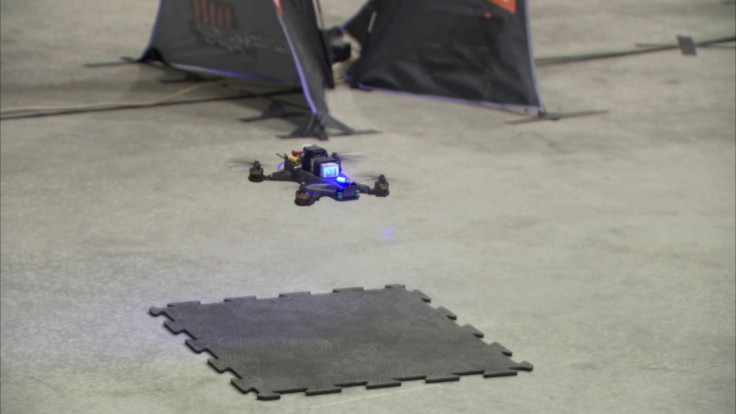Watch Nasa's AI-piloted drone race its human-controlled counterpart
The autonomous drone uses complex algorithms and Google's Tango technology.
Demonstrating the power of Artificial Intelligence, Nasa has shown how its autonomous drone takes on a UAV controlled by a professional drone pilot.
Nasa's Jet Propulsion Laboratory, on Tuesday (21 November), shared a video showcasing a race between its AI-powered drone and a UAV device helmed by professional drone pilot, Ken Loo. The autonomous drone, which uses complex algorithms and Google's Tango technology, is capable of attaining speeds around 129kmph in a straight path, but in this race, conducted on 12 October, it could only attain 50-60kmph while applying brakes and avoiding obstacles.
In the video, the AI-piloted drone could be seen sifting through obstacles with accuracy. Both participants started with similar lap times, but after a dozen rounds, Ken learned the course and was able to surpass the speeds of the autonomous drone.
"We pitted our algorithms against a human, who flies a lot more by feel," said Rob Reid of JPL, the project's task manager.
"You can actually see that the A.I. flies the drone smoothly around the course, whereas human pilots tend to accelerate aggressively, so their path is jerkier."
Ken felt exhausted after some time, however, the AI- powered drone continued consistently. Ultimately, Ken's average lap time clocked at 11.9 seconds, while AI-drone followed right behind with an average time of 13.9 seconds per lap.
"This is definitely the densest track I've ever flown," Loo said after the race. "One of my faults as a pilot is I get tired easily. When I get mentally fatigued, I start to get lost, even if I've flown the course 10 times."

The AI-backed drone uses cameras to track its position and matches it with a pre-loaded map to move and avoid obstacles. However, as Nasa notes, these UAVs sometimes lose track of their surrounding due to motion blur.
Although artificial intelligence could not manage to win, this race clearly demonstrates the potential of camera-based localization and mapping technologies. Nasa believes further developments could make these drones ideal candidates to check inventory in large warehouses or to find survivors in disaster-hit areas.





















